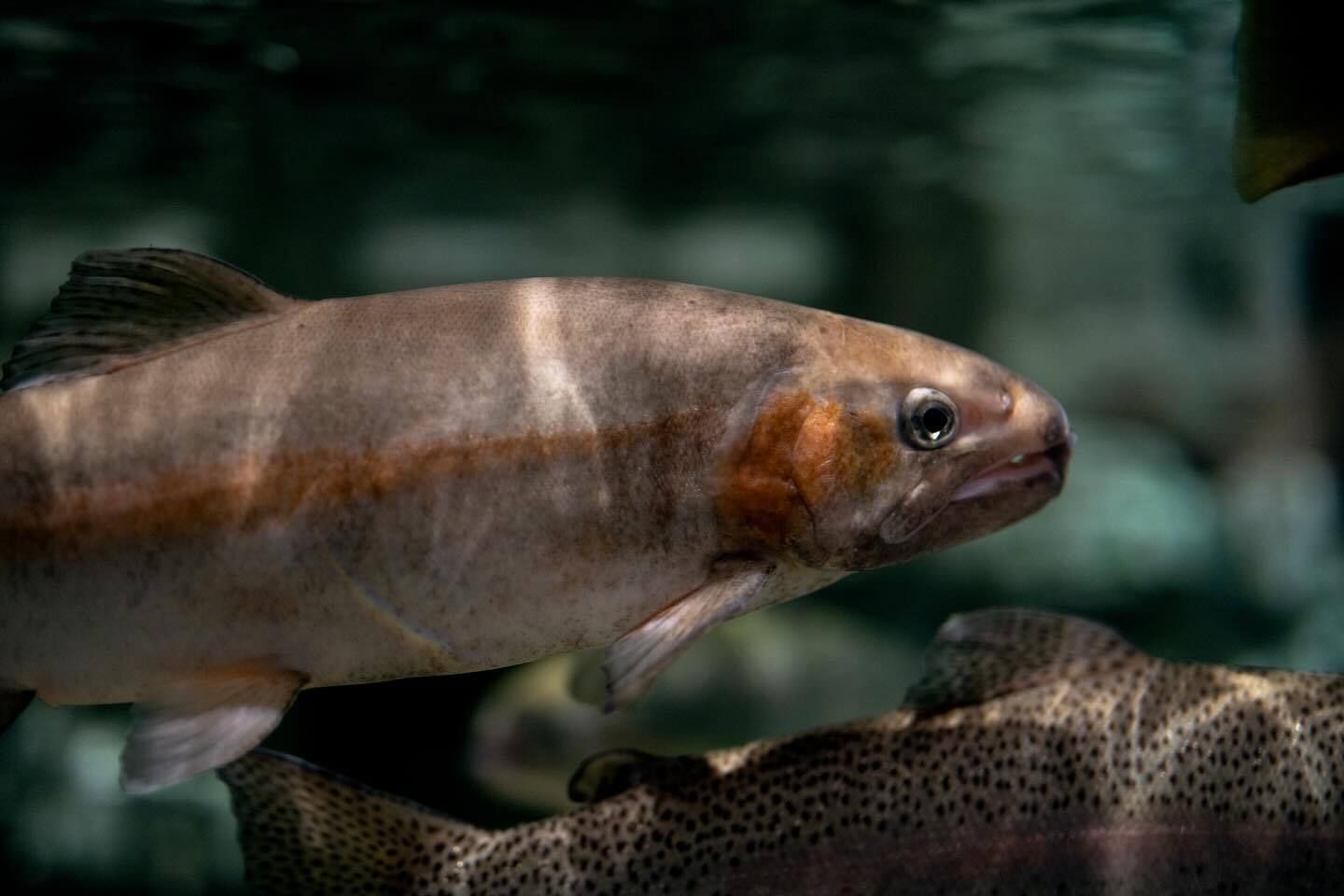- Rainbow trout are not native to Missouri, highlighting their non-indigenous status.
- Stocking practices and their origin, involving hatcheries across the state.
- The ecological role of rainbow trout as top predators and their impact on local ecosystems.
- Fishing opportunities and the economic benefits of trout in Missouri.
- Educational displays and conservation efforts at organizations like Wonders of Wildlife.
Rainbow trout (Oncorhynchus mykiss) are widely recognized around the globe, valued for their striking appearance and popularity among anglers. However, it is essential to note that these fish are not native to Missouri. They were introduced to the state in the late 19th century. This introduction marks a significant chapter in state fisheries management and ecological dynamics. Understanding the history and impact of rainbow trout in Missouri offers insight into broader ecological principles and conservation practices.
The decision to introduce rainbow trout into Missouri watersstemmed from the demand for game fish. Fishing provided not only recreational opportunities but also enhanced local economies. Missouri’s waterways were deemed suitable for these fish due to their cold, clean streams and lakes, characteristics often found in the state’s southern regions. Given the popularity of fishing, particularly in areas designated as natural habitats, rainbow trout were viewed as a means to attract anglers and stimulate tourism.
In terms of stocking practices, rainbow trout are obtained from four state park hatcheries, strategically located to provide fish to various bodies of water across Missouri. This intensive hatchery program operates year-round, focusing on ensuring that there is always an ample supply of trout during the fishing seasons. The hatcheries follow specific protocols for breeding, raising, and releasing fish to maintain genetic diversity and promote healthy populations. Anglers often benefit from well-stocked waters, which boosts the likelihood of catching these sought-after fish.
Rainbow trout thrive in cold, oxygen-rich waters, making them suitable for streams and rivers with higher flows. They require a particular environment to flourish, which has prompted the state to manage habitats carefully. Although they are not native, their presence has become integral to the fishing experience in Missouri, thus reinforcing the importance of responsible fish management practices.
Ecologically, rainbow trout serve as top predators, occupying a pivotal niche in the aquatic food web. Their predatory habits can influence the population dynamics of other fish and invertebrates in freshwater systems. When these trout are introduced into non-native waters, they can alter the existing ecosystem balance, sometimes outcompeting local species for food and space. In Missouri, the presence of rainbow trout has led to various ecological observations regarding their interactions with native fish populations, such as the potential decline of smaller species due to predation.
Managing the ecological impacts of introduced species like the rainbow trout mandates ongoing research and monitoring. Biologists and conservationists strive to balance the recreational benefits of trout fishing against the potential risks posed to indigenous fish populations. Studies have shown that while rainbow trout offer excellent angling opportunities, their releases must be controlled. Overpopulation can lead to decreased diversity among native fish, which may struggle to compete.
Fishing has a significant economic impact, particularly in southern Missouri, where trout fishing forms a core aspect of local culture and recreation. The introduction of rainbow trout has, over the years, boosted tourism in the region. Visitors come from across the country, drawn by the prospect of reeling in these vibrant fish. The influx of anglers stimulates local businesses, from tackle shops to lodging and dining establishments.
On a larger scale, the Missouri Department of Conservation employs various strategies to ensure sustainable fishing practices. These strategies include regulations on catch limits, seasonal restrictions, and designated fishing areas to promote responsible angling. Through effective educational campaigns, the department emphasizes the importance of conservation to both residents and visitors. Techniques such as catch-and-release have gained popularity, allowing anglers to enjoy the sport while contributing to the preservation of fish populations.
Education plays a crucial role in fostering environmental stewardship. Institutions such as Wonders of Wildlife in Springfield offer engaging displays that help the public understand aquatic ecosystems and species like the rainbow trout. At the Rivers & Streams exhibit, visitors can observe these fish in a controlled environment that simulates their natural habitat. This educational experience promotes awareness about the ecological roles of various aquatic species and underscores the importance of conservation efforts.
As we reflect on the history of rainbow trout in Missouri, it is clear that their non-native status brings complexity to fishing and conservation practices in the state. While rainbow trout are a beloved component of Missouri angling, their introduction necessitates careful consideration of ecological impacts, sustainable fisheries management, and ongoing educational initiatives. Anglers and conservationists alike must remain vigilant in ensuring that fishing practices support the health of native ecosystems.
The future of fishing in Missouri, particularly concerning rainbow trout, hinges on collaborative efforts among government agencies, conservation groups, and local communities. By recognizing the significance of managing both introduced and native species, stakeholders can ensure that Missouri’s aquatic environments remain vibrant and diverse for generations to come.
*****
Source Description
Did you know rainbow trout aren’t native to Missouri?
Trout are stocked from four state park hatcheries in most places they’re found, are top predators in their ecosystems, and encourage game fishing across the southern part of the state.
You can see rainbow trout along your journey at Wonders of Wildlife in our Rivers & Streams exhibit, just after you enter Swamp at Night from Shipwreck Reef!
📷 : @marshall_the_red


